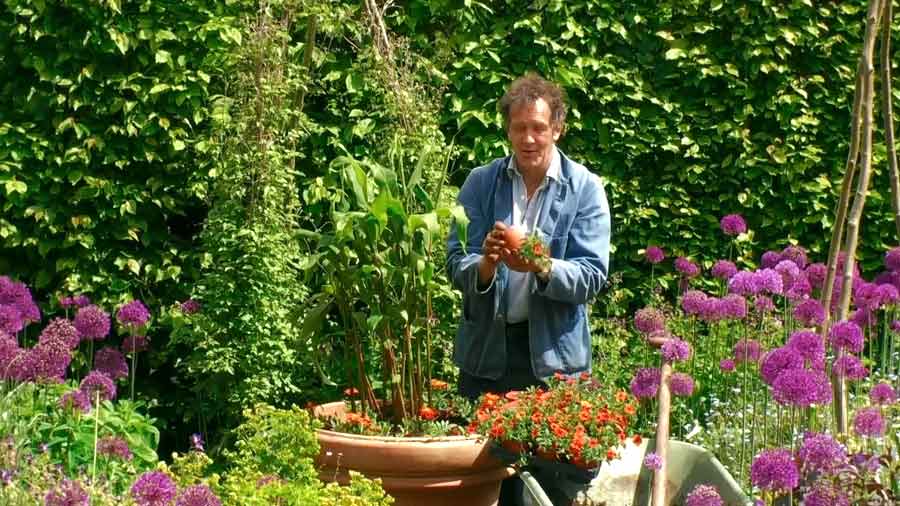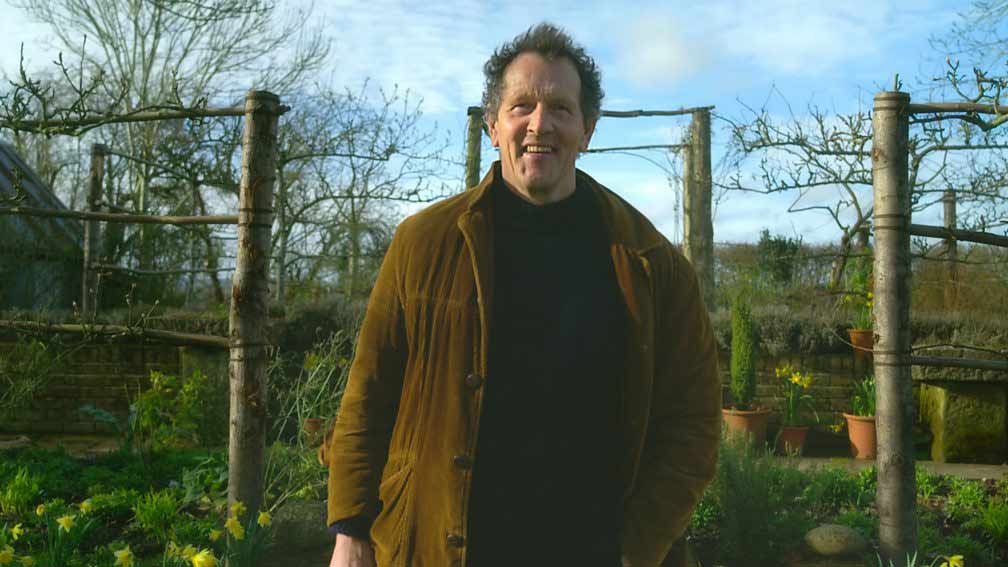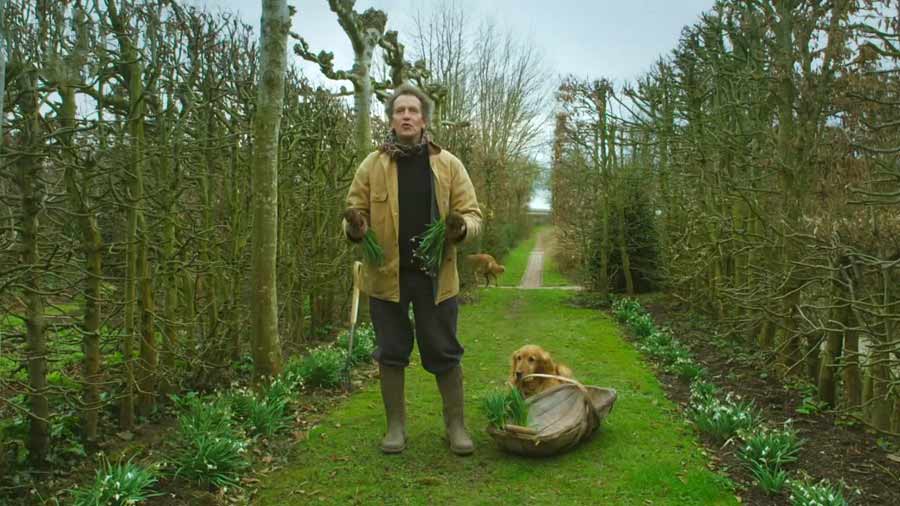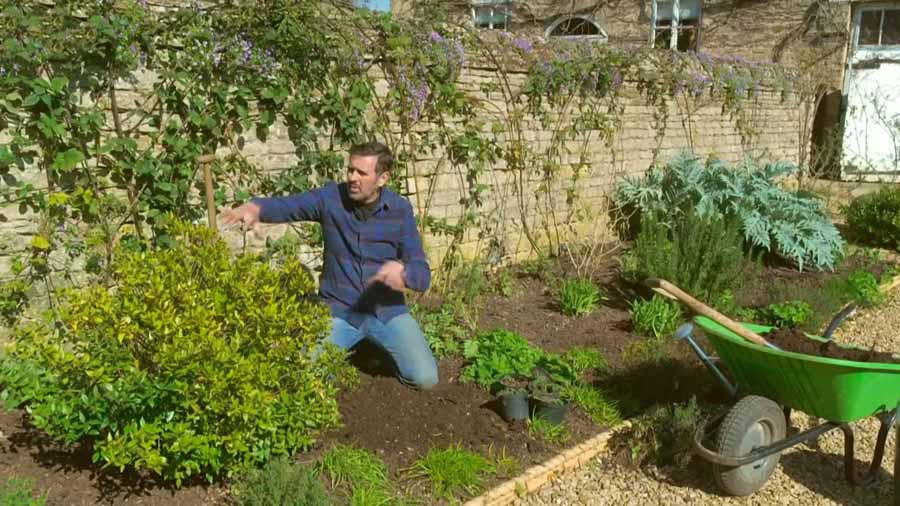Gardeners World episode 11 2020: If you have been growing tomatoes along with Monty, join him at Longmeadow as he shows how to pot them on to the next stage of their growth, As well as potting up tender vegetables, he is also planting containers for summer colour.
Adam Frost is enjoying the seasonal plants in his garden and has ideas of transforming a part of his plot into a seating area using a few logs and plants. In London, Arit Anderson and her family have been making the most of their time at home by filling a range of imaginative containers with a variety of plants. Frances Tophill explores spring flowering trees and their benefits for bees, and the episode goes indoors to discover how one man has designed his home around his love of houseplants.
There are also more viewers’ videos of what people have been getting up to in their own gardens.
Gardeners World episode 11 2020
How to grow ginger lilies
Provided that conditions are right for the plants they will mostly look after themselves. They are relatively pest free although caterpillars can cause damage and Red Spider mite, if they are kept too dry.
The plants are quite hungry feeders and require a good feed and plenty of water when in full growth. If allowing dying back for the winter then should not be fed after the end of August. They must not be waterlogged over winter as this can be fatal for them, opposed to when in full growth the can almost be aquatic.
Summer containers
Plant up containers with summer bedding for glorious displays throughout the summer months. They can be used for lighting up a patio, deck, balcony or even a dull spot in a border.
For successful summer displays, choose plants that flower over a long period of time, respond well to deadheading and are tolerant of container cultivation. A wide range of suitable plants should be available in most garden centres from late March onwards. However, don’t plant them out until the risk of frost has passed in your area.
Woodland plants – Gardeners World episode 11 2020
It can be a challenge to establish plant cover under the canopy of large trees. Shade and lack of moisture are both problems in these conditions, but there are a number of plants that will tolerate these situations.
Plants growing under tree canopies often suffer from poor growing conditions. In heavily shaded situations they not only struggle from lack of light, but may be deprived of moisture and nutrients because of strong competition from the trees.
If your garden receives light shade or partial shade – perhaps receiving sunlight for two or three hours in early morning or late evening, there is a range of suitably shade-tolerant plants available, and with some summer moisture, it would be worth trying plants from our annuals, bulbs and perennials for shade and shrubs for shade pages.
Grow your own tomatoes
Tomatoes produce abundant delicious fruits in a range of colours, shapes and sizes. They are easily grown in gardens, greenhouses or containers, and are appreciated by children and adults alike.
Tomatoes are very easy to grow from seed. Alternatively, you can buy tomato plants from late spring from garden centres; these are a good option where you can’t maintain the right conditions for germination and growing on. Grafting your own or buying grafted plants is another way to raise tomatoes.
Sow seed in late March to early April for outdoor crops, and in mid-February for growing in an unheated glasshouse. Seed can be expensive, but usually only a few plants are needed, and germination is usually good.
Gardening on a balcony
If you live in a building without its own garden, establishing a roof or balcony garden is the ideal way to create your own mini horticultural haven, ensuring you don’t miss out on growing a wide range of plants.
Depending on the level of exposure and altitude, a wide range of plants can be grown on a balcony or roof garden. The ideal method is to establish some shelter using screens or robust plants, which then creates a microclimate where other plants can survive.
Peppers and chillies – Gardeners World episode 11 2020
Sweet peppers and chillies can be grown in pots on a sunny, warm patio in a similar way to tomatoes, but will produce a better crop when grown in a greenhouse or conservatory. Chillies and peppers are green when young, maturing to a variety of colours and flavour varying from mild to extremely hot.
Peppers and chillies need a warm, sunny sheltered position and, therefore, are only suitable for outdoor cultivation in milder parts of the country, and benefit greatly from cloche or even fleece protection. They can be grown in frames, unheated polythene tunnels or greenhouses and are also suitable for growing in containers or grow bags filled with multipurpose compost.
Vegetables in containers
Planting vegetables in containers is a versatile way of growing edible crops in the garden, particularly where space is limited.
Aftercare should involve provision of a constant water supply, but take care to avoid prolonged waterlogging. A feed of general-purpose liquid fertiliser can be applied every two weeks. If frost is likely, cover the plants with horticultural fleece and move the pots to a warm, sheltered spot.
Asparagus know-how
One of the most sought-after vegetables, asparagus is easy to grow on well-drained soil or in raised beds, as long as it is kept well fed and weed-free. Do not replant an old asparagus bed with new asparagus plants. Choose fresh ground to avoid build-up of diseases. An open, sunny site is best, but asparagus will tolerate dappled shade.
Asparagus grows on most soil types provided they are well drained. On heavy soils consider creating raised beds. Most gardeners plant one-year-old dormant plants called ‘crowns’ in March, although asparagus can also be raised from seed (see the propagation section below).
Keep the asparagus bed weed free. Weed by hand rather than with a hoe, as the shallow roots of the asparagus plants are easily damaged. Mulch the bed in late winter to discourage weeds and to retain moisture. Consider covering the bed from autumn to winter with an opaque weed mat to prevent annual weeds germinating.
In early spring, apply 100g per sq m (3oz per sq yd) of general fertilizer such as Growmore, or fish, blood and bone. If growth is weak, repeat this application once harvesting has finished.




